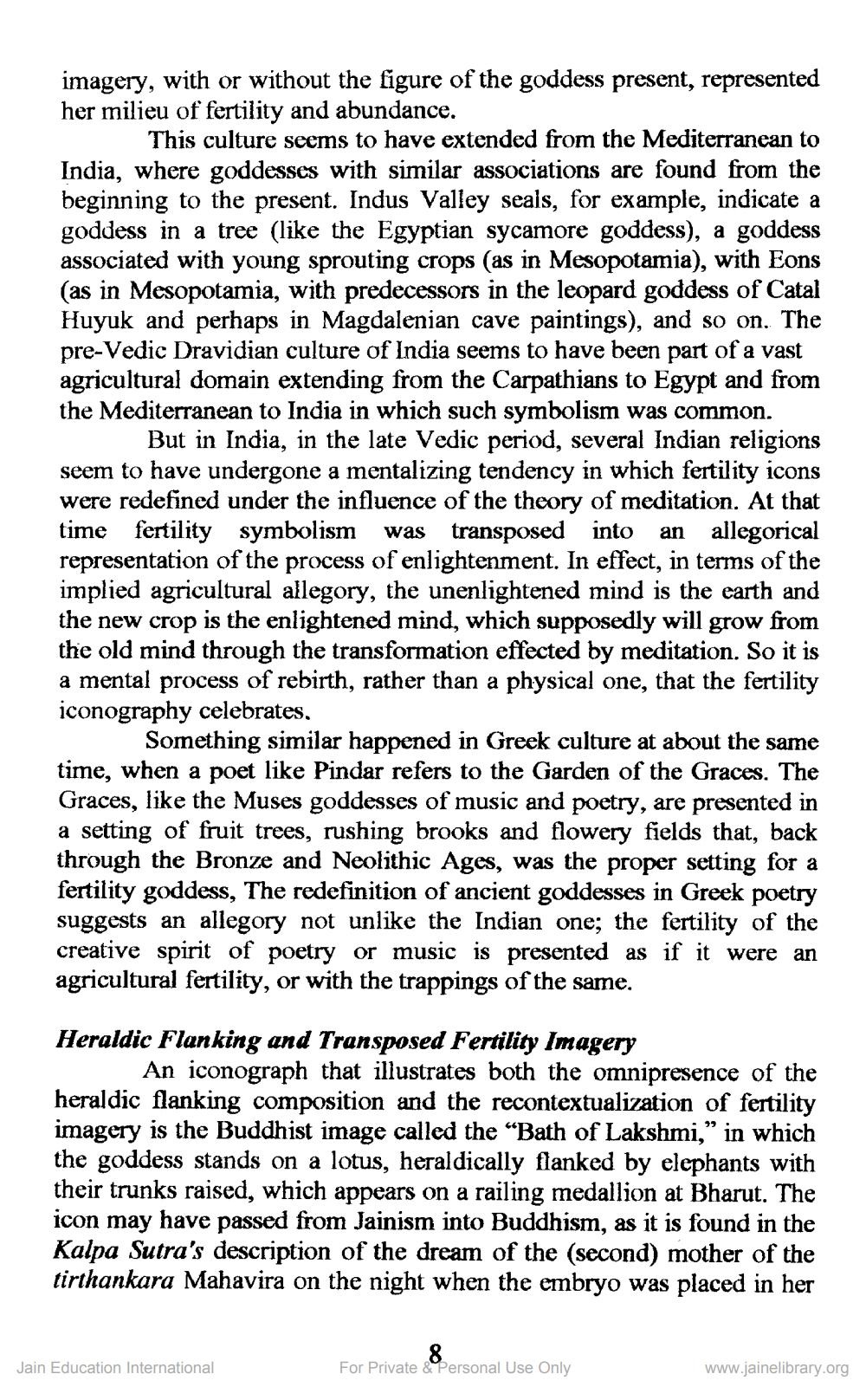________________
imagery, with or without the figure of the goddess present, represented her milieu of fertility and abundance.
This culture seems to have extended from the Mediterranean to India, where goddesses with similar associations are found from the beginning to the present. Indus Valley seals, for example, indicate a goddess in a tree (like the Egyptian sycamore goddess), a goddess associated with young sprouting crops (as in Mesopotamia), with Eons (as in Mesopotamia, with predecessors in the leopard goddess of Catal Huyuk and perhaps in Magdalenian cave paintings), and so on. The pre-Vedic Dravidian culture of India seems to have been part of a vast agricultural domain extending from the Carpathians to Egypt and from the Mediterranean to India in which such symbolism was common.
But in India, in the late Vedic period, several Indian religions seem to have undergone a mentalizing tendency in which fertility icons were redefined under the influence of the theory of meditation. At that time fertility symbolism was transposed into an allegorical representation of the process of enlightenment. In effect, in terms of the implied agricultural allegory, the unenlightened mind is the earth and the new crop is the enlightened mind, which supposedly will grow from the old mind through the transformation effected by meditation. So it is a mental process of rebirth, rather than a physical one, that the fertility iconography celebrates.
Something similar happened in Greek culture at about the same time, when a poet like Pindar refers to the Garden of the Graces. The Graces, like the Muses goddesses of music and poetry, are presented in a setting of fruit trees, rushing brooks and flowery fields that, back through the Bronze and Neolithic Ages, was the proper setting for a fertility goddess, The redefinition of ancient goddesses in Greek poetry suggests an allegory not unlike the Indian one; the fertility of the creative spirit of poetry or music is presented as if it were an agricultural fertility, or with the trappings of the same.
Heraldic Flanking and Transposed Fertility Imagery
An iconograph that illustrates both the omnipresence of the heraldic flanking composition and the recontextualization of fertility imagery is the Buddhist image called the “Bath of Lakshmi,” in which the goddess stands on a lotus, heraldically flanked by elephants with their trunks raised, which appears on a railing medallion at Bharut. The icon may have passed from Jainism into Buddhism, as it is found in the Kalpa Sutra's description of the dream of the (second) mother of the tirthankara Mahavira on the night when the embryo was placed in her
Jain Education International
For Private & Personal Use Only
www.jainelibrary.org




